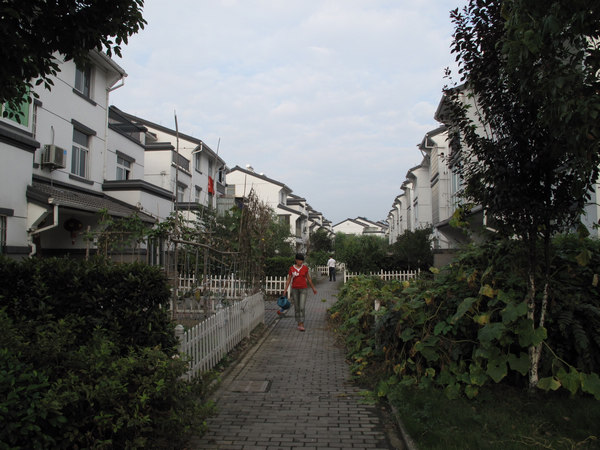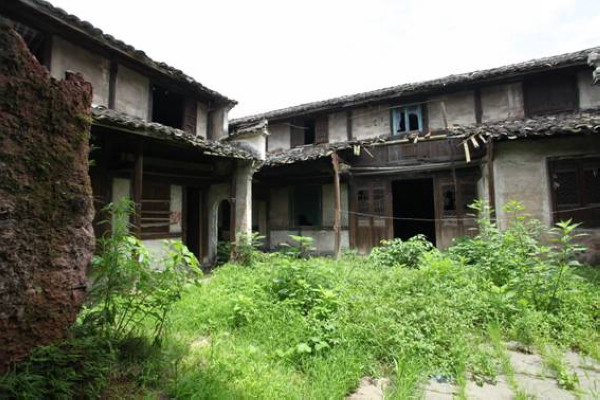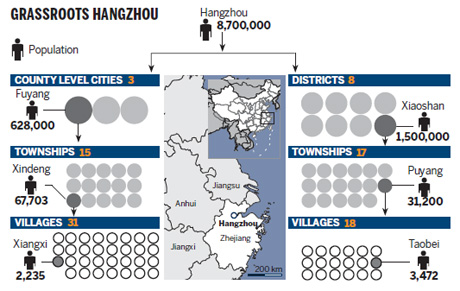 |
|
The residential area of Taobei new village has become a model of urbanization. [Provided to China Daily] |
Hangzhou is known for its scenic beauty and commercial vibrancy. Like most big Chinese cities, it has a postcard-pretty city proper surrounded by rural expanses rarely seen by outsiders. It is the quiet transformation of these usually out-of-sight areas that may mark the coming phase of the country's new splendor.
Urbanization is the obligatory process through which resources are optimized and living standards rise for the vast majority of the erstwhile rural population. However, the dash toward clusters of high-rises and dense road networks often takes place at the expense of farmers losing their farmland and livelihood. What is happening in two remote villages on the outskirts of the capital city of Zhejiang province repudiates the conventional wisdom of the inexorable practices that have marred the rural-urban shift of demographics.
In these villages, government or corporate investment provides the necessary impetus to the local economy without taking away farmers' decision-making power. Whether they still control the land or have yielded it for a less traditional lifestyle, the mechanisms are strengthened to protect their interests, both short-term and long-term. Instead of being coerced into an urban setting, they have shown a willingness to move to the right side of the track, so to speak.
 |
|
Taobei village in its dilapidated past. [Provided to China Daily] |
Xiangxi
Earlier this year, when the two parts of the 14th century painting Dwelling in the Fuchun Mountains were reunited for the first time in three-and-half centuries, it made headlines.
Little did the art community realize that, in the place where the painter Huang Gongwang immortalized with ink and brush, there has been an effort to restore the ecology to the level depicted in the scroll.
One of the many streams that flow into Fuchun River courses through Xiangxi village, a mountainside hamlet with 700 households or 2,235 inhabitants. A covered corridor at the entrance to the village serves as a hangout for senior citizens who play cards and watch the comings and goings. A dog ambles around wagging its tail. On a path supposedly trodden by an ancient poet along the stream, the grapevines are changing from green to brown.
This picture of rustic beauty belies the village's recent past when as many as 16 paper mills dotted the 12-sq-km landscape, pumping torrents of toxic water in the creek. "Even plants in the nearby plots died," said Wang Jinming, the village chief.
Nowadays, there is hardly any trace of pollution. You can count the fish in the shallow creek.
"Many of us grow grapes, which is quite profitable. Just five rows can bring in more than 10,000 yuan a year," said Wang, pointing to a narrow strip across the creek.
To make things easier, urban slickers even come to pick the fruits themselves. "On a busy day, there are 100 visitors or more."
Grape is not the only fruit that has turned the village around from a heavy polluter to ecological paragon. The Chinese bayberry and kiwi are also popular.
But more than anything, bamboo provides Xiangxi's economic support. There are a dozen processing factories in the village churning out anything from bamboo chairs to sit on to bamboo shoots on your menu. They register a combined revenue of 100 million yuan.
|
 |
